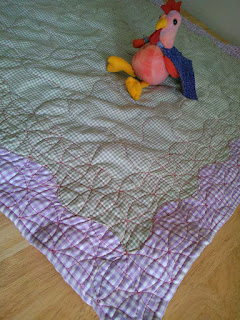"Trust Your Heart To Lead You Home" is a triptych carved on cherry wood panels. This mosaic mock-up is a variation on the third panel, and is my fourth effort at a feasible cyclocentric mosaic in tile. It contains samples of five polygons not commonly seen in tile in five networks similarly underused, these polygons have all been test cut (with diamond tools) in the sizes necessary to produce this image for a back-splash 41 5/8 in x 87 in. 




These examples represent the smallest pieces I was able to cut consistently. Quite a number of them just broke from the strain, and more than a few were backwards (the wiggle has a direction). It wasn't until later that I realized those backwards pieces were the key to an even odder group of symmetries. I was moving them around wondering just how one might join lefty wiggles to righty ones. I had to flip some over because so far I had no place for out of phase pieces. That was before I discovered "phase flip, side slip".
Applied to the triple wiggle triangle window, these phase flipped triangles don't just wiggle they crawl. The effect on the other cyclocentric polyhedra is no less pronounced.

Applied to the triple wiggle triangle window, these phase flipped triangles don't just wiggle they crawl. The effect on the other cyclocentric polyhedra is no less pronounced.

first posted on LinkedIn Dec10,2015













































